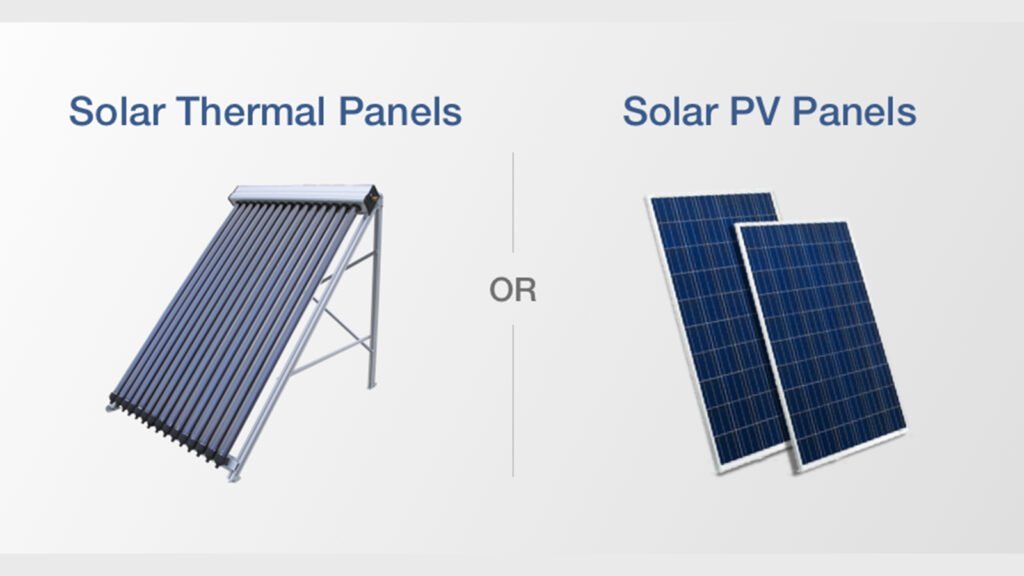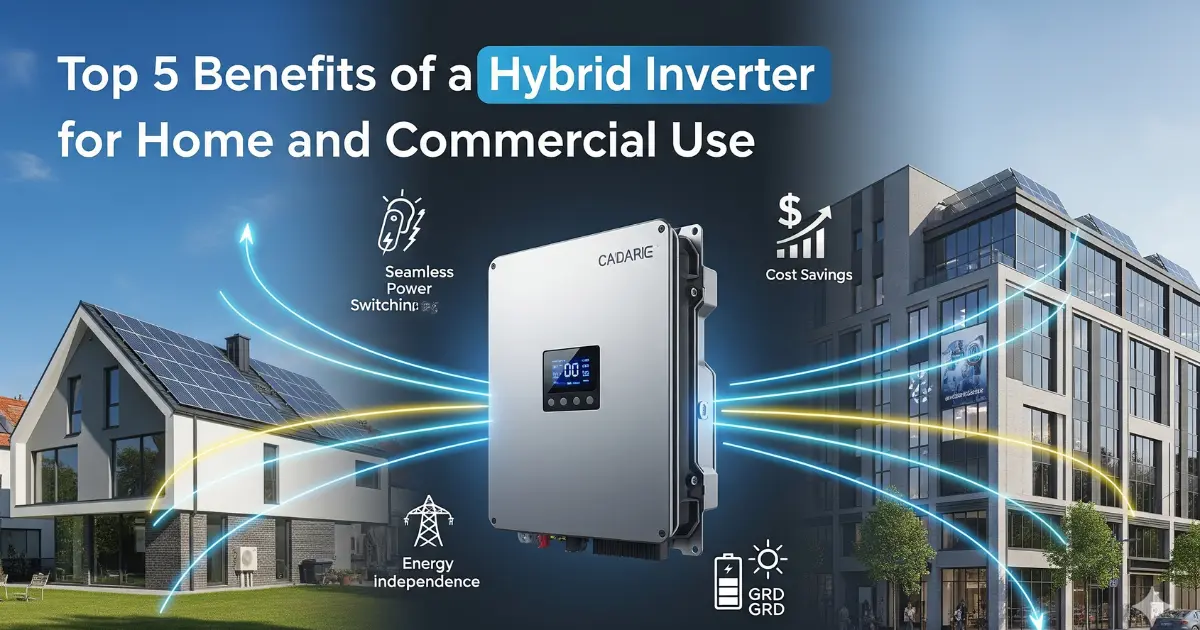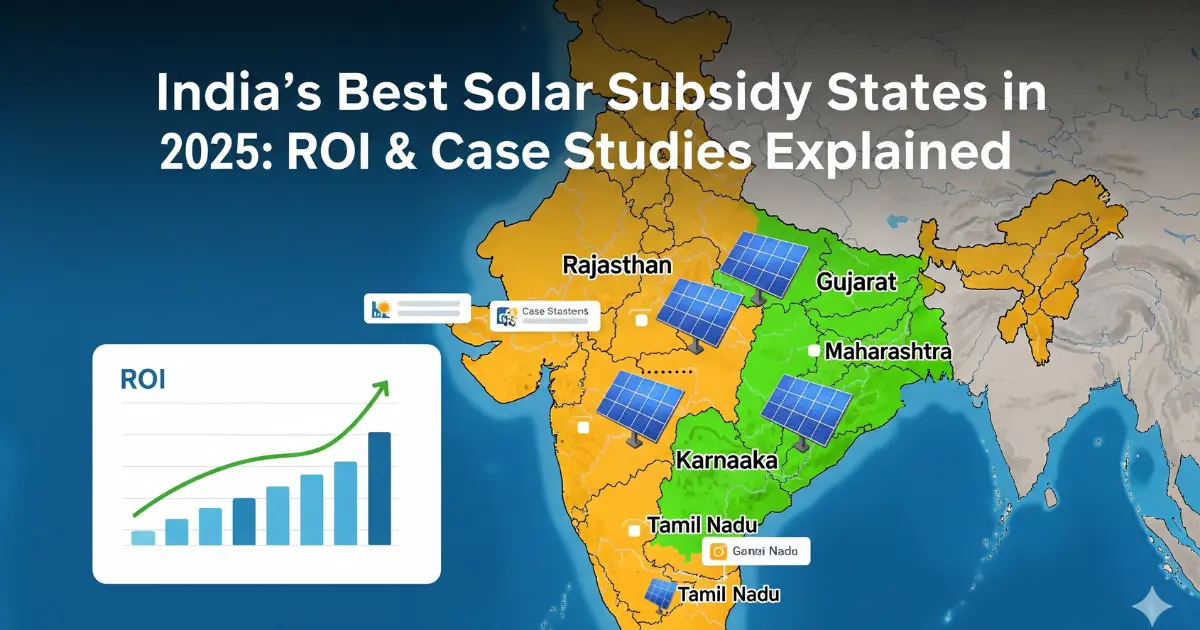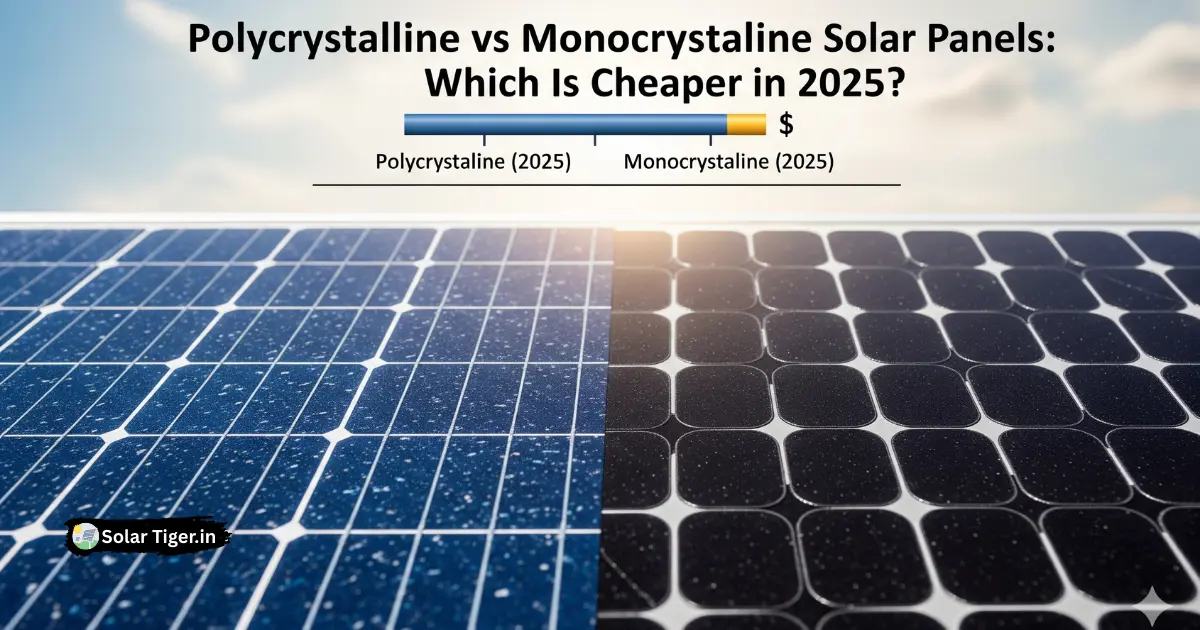India is seeing a fast shift towards clean and green energy. Solar power plays a big role in this change. But when people start looking at solar options, one question often comes up — What’s the difference between Solar PV and Solar Thermal systems?
Both use sunlight. But they work differently and serve different needs. One gives you electricity. The other gives you heat. In this article, we’ll explain the difference, help you understand which one is better for your home or business, and answer common questions from Indian users.
What Is Solar PV (Photovoltaic)?
Solar PV (Photovoltaic) panels convert sunlight into electricity. They are made from silicon-based cells. When sunlight hits these cells, they generate DC (direct current) electricity. This is then converted into AC (alternating current) through an inverter, which powers homes and offices.
Key Features of Solar PV:
- Converts light into electricity
- Can run lights, fans, fridges, TVs, ACs, and more
- Requires an inverter and optional batteries
- Works in grid-tied, hybrid, or off-grid systems
Solar PV systems are the most common in India, especially for rooftop solar installations, grid-connected solar systems, and home solar power solutions.
What Is Solar Thermal?
Solar Thermal systems do not make electricity. Instead, they use sunlight to heat water or other fluids. This hot water is stored in a tank and can be used for bathing, cleaning, cooking, or even industrial processes.
Key Features of Solar Thermal:
- Captures sunlight to generate heat
- Commonly used in solar water heaters
- Ideal for domestic hot water needs
- Works well in sunny regions with high water usage
Solar thermal systems are popular in Indian cities like Bengaluru, Pune, and Hyderabad where solar water heaters are often made mandatory in new buildings.
Also Read Understanding the (SECI) Solar Energy Corporation of India
Efficiency Comparison: PV vs Thermal

Solar thermal systems are more efficient at capturing solar energy. They convert 70–90% of sunlight into heat. In contrast, solar PV systems convert only about 15–25% of sunlight into electricity.
However, electricity is more flexible. You can store it in batteries, feed it into the grid, or use it to power any appliance. So, solar PV may offer more value, even at lower efficiency, especially for full home or commercial power use.
Cost and Installation Differences
Solar PV:
- Higher upfront cost
- Needs solar panels, inverter, wiring, structure
- Payback time: 5–7 years
- Longer lifespan (25–30 years)
- Net metering available in many Indian states
- Government subsidies up to 40% for residential users
Solar Thermal:
- Lower upfront cost
- Only needs collectors and a hot water tank
- Payback time: 2–4 years
- Slightly more maintenance
- Typically used for hot water, not power
- Ideal for homes with 4–5 family members needing regular hot water
Roof Space and Setup
Solar PV systems need more rooftop space compared to thermal. For example, a 3 kW system requires around 25–30 square meters of space.
Solar thermal systems can be installed with smaller panels, as they only need to meet your hot water needs. A typical 200-liter solar water heater uses just 3–4 square meters.
If your rooftop is small, a solar thermal system might be a better fit for basic needs. But if you want to lower your entire electricity bill, then go with solar PV panels.
Applications and Best Use Cases
| Application | Best Option |
|---|---|
| Power for home appliances | Solar PV |
| Hot water for bathrooms | Solar Thermal |
| Industrial heat processes | Solar Thermal |
| EV charging | Solar PV |
| Remote off-grid solutions | Solar PV |
| Heating swimming pools | Solar Thermal |
Maintenance and Lifespan
- Solar PV systems are low maintenance. Clean them every 6 months. They come with 25-year performance warranties.
- Solar Thermal systems need more care. You may have to replace the fluid, check pipes, or service the circulation pump every few years.
Still, both types of systems are highly durable and work well for over 20 years when properly maintained.
Suitability in Indian Climate
India’s climate is ideal for both systems. Most parts of the country receive over 300 sunny days a year. However, thermal systems lose efficiency in cold or rainy weather. PV systems continue to work—just with reduced power on cloudy days.
Solar PV also works better with net metering policies in India, allowing you to earn credits for extra electricity sent to the grid.
Which One Should You Choose?
Here’s a simple rule:
- Choose Solar PV if you want to reduce your electricity bill, run appliances, charge your EV, or earn from net metering.
- Choose Solar Thermal if you only need hot water, want a quick return on investment, and have a smaller roof area.
Some homeowners use both—a hybrid system that gives you electricity and hot water. But that requires careful planning and may increase installation costs.
Growing Trend in India
India added over 20 GW of solar capacity in 2024 alone. Most of it was from solar PV. The central government is promoting rooftop solar for homes and SMEs. More DISCOMs are offering easy net metering.
Meanwhile, solar thermal is quietly supporting thousands of households with affordable hot water. It is especially useful in high-rise apartments, hotels, and hostels across India.
FAQs – Solar PV vs Solar Thermal
Q1. Can I install both solar PV and solar thermal on the same roof?
Q2. Which solar system saves more money in the long run?
Q3. Does solar PV work during power cuts?
Q4. Is solar thermal effective in cold regions of India?
Q5. Are government subsidies available for both systems?
Final Thoughts
Both Solar PV and Solar Thermal are great ways to use the sun’s energy. The right choice depends on your energy needs, budget, and goals.
- Want to cut down on electricity bills? Go for solar PV.
- Want hot water all year with less cost? Choose solar thermal.
- Want both? Consider a combo setup.
With rising electricity rates and government support, now is the best time to go solar in India. It helps your wallet, the environment, and the nation’s energy independence.
Author- Ayush






